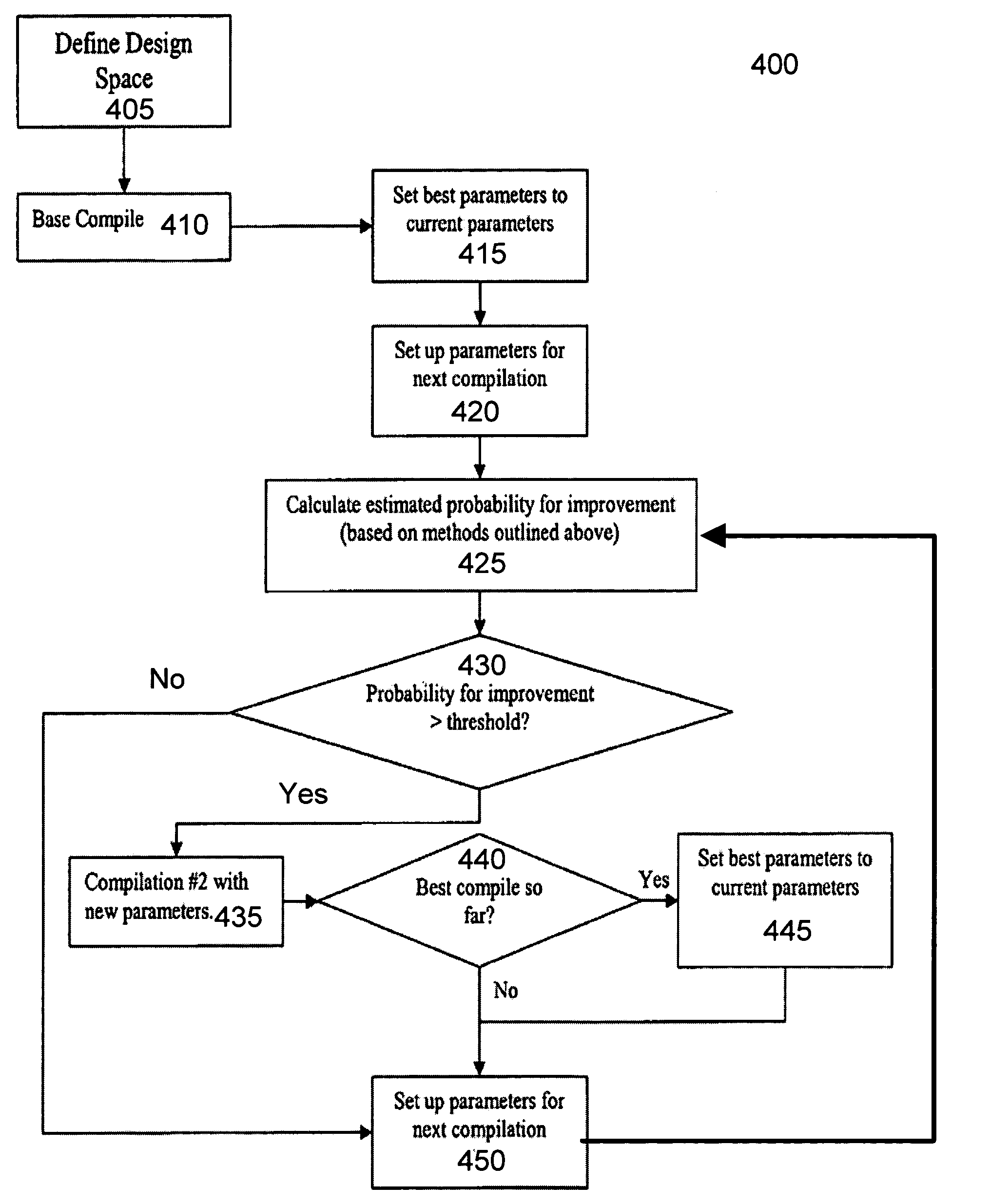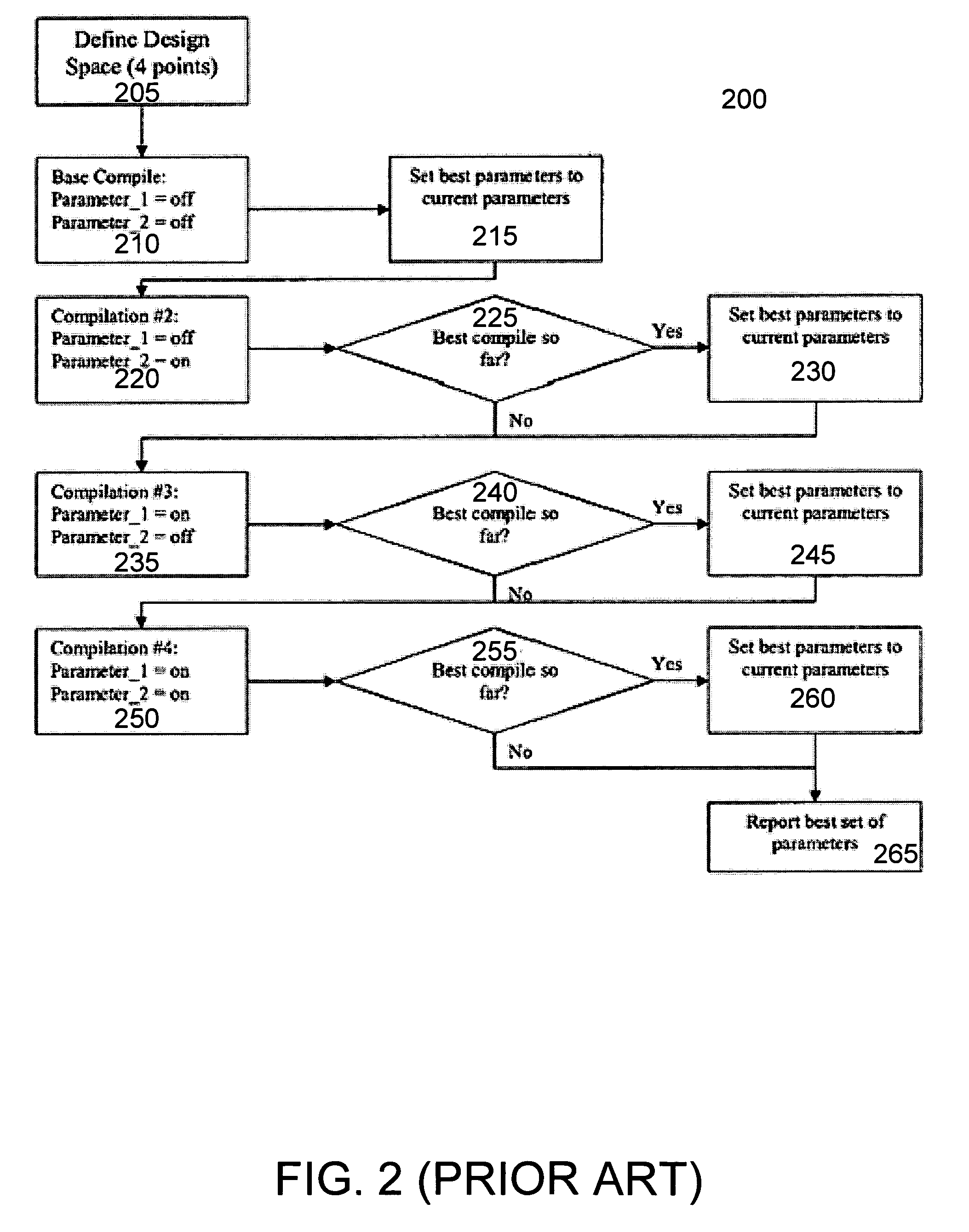Directed design space exploration
a technology of design space and exploration, applied in the field of programable devices, can solve the problems of extremely time-consuming and exhaustive evaluation of all possible combinations, and achieve the effects of reducing the size of the design space, reducing the time and computational effort, and improving the performance of user design
- Summary
- Abstract
- Description
- Claims
- Application Information
AI Technical Summary
Benefits of technology
Problems solved by technology
Method used
Image
Examples
Embodiment Construction
[0019]FIG. 1 illustrates the phases of a typical compilation process 100 suitable for implementing an embodiment of the invention. The compilation process 100 converts a user design into a programmable device configuration adapted to configure a programmable device to implement the user design. The extraction phase 105 converts a description of the user design, expressed for example in a hardware description language, into a register transfer layer description.
[0020]Synthesis phase 110 converts the register transfer layer description of the user design into a set of logic gates. Technology mapping phase 115 subdivides the set of logic gates into a set of atoms, which are groups of logic gates matching the capabilities of the logic cells or other functional blocks of the programmable device. A given user design may be converted into any number of different sets of atoms, depending upon the underlying hardware of the programmable device used to implement the user design.
[0021]Followin...
PUM
 Login to View More
Login to View More Abstract
Description
Claims
Application Information
 Login to View More
Login to View More - R&D
- Intellectual Property
- Life Sciences
- Materials
- Tech Scout
- Unparalleled Data Quality
- Higher Quality Content
- 60% Fewer Hallucinations
Browse by: Latest US Patents, China's latest patents, Technical Efficacy Thesaurus, Application Domain, Technology Topic, Popular Technical Reports.
© 2025 PatSnap. All rights reserved.Legal|Privacy policy|Modern Slavery Act Transparency Statement|Sitemap|About US| Contact US: help@patsnap.com



